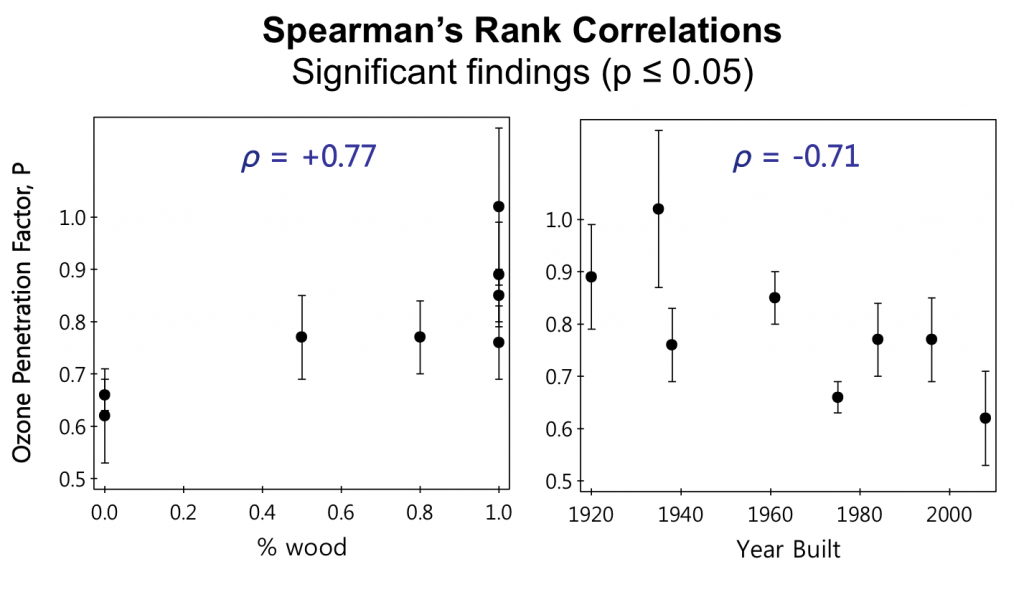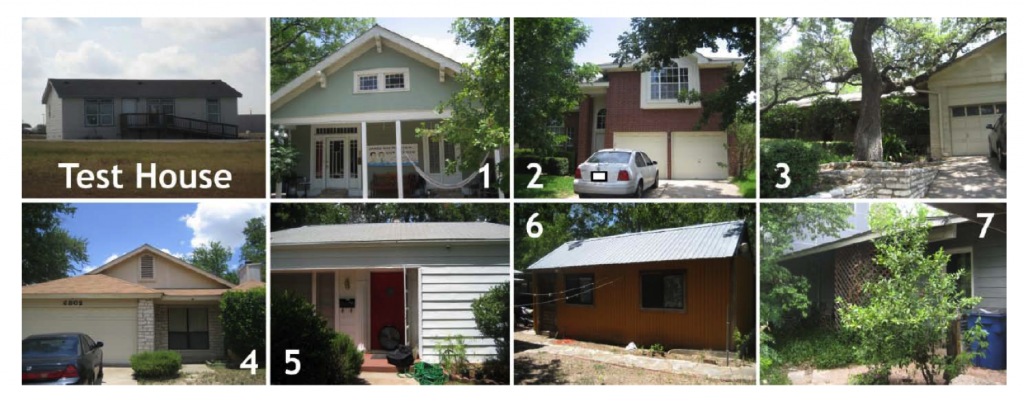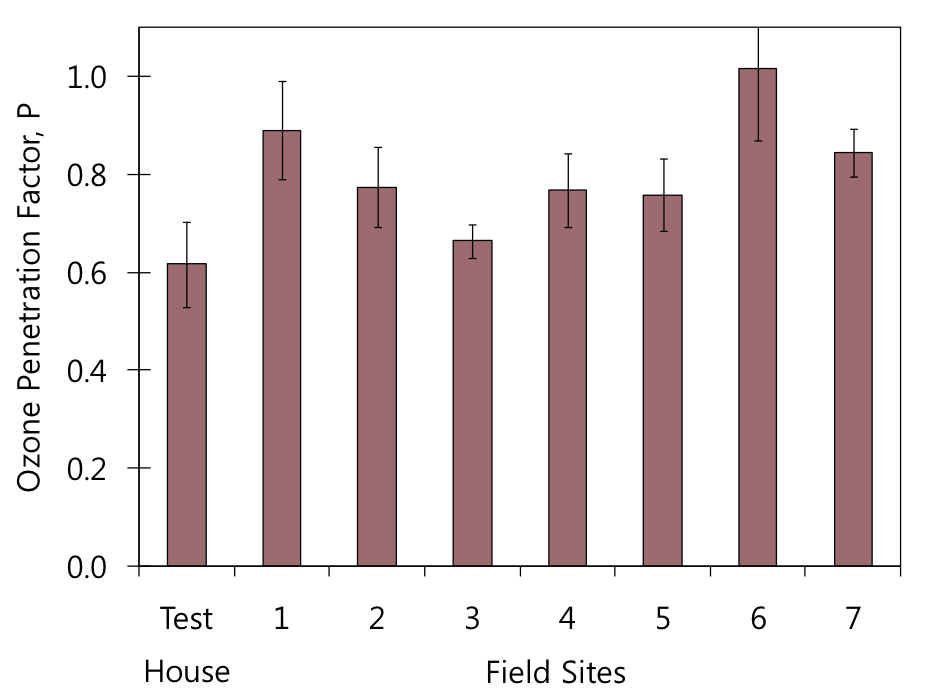Ozone infiltration into homes
We are currently looking for participants in the Chicago area!
If you are interested in volunteering your home for a pilot study this summer, please see the flyer below and contact the group!

Results from previous measurements
Much of human exposure to ambient ozone and ozone reaction byproducts is thought to occur inside buildings. However, until now, there were no experimental data on the ability of ozone to penetrate through building envelopes and into homes. This work presented a method to determine the penetration factor for ozone in buildings and applied it in an unoccupied test house and seven single-family residences. The mean (±s.d.) ozone penetration factor was measured as 0.79±0.13 in the eight homes using this method, ranging from ~0.6 to ~1.0.
These results suggest that some homes are more protective against outdoor ozone than others. For example, the least protective home allowed ~100% of outdoor ozone to infiltration, while the most protective home removed approximately 40% of outdoor ozone before it entered the indoor environment.
An analysis of tests across the homes revealed that ozone penetration was significantly higher in homes with more painted wood envelope materials, homes with larger air leakage exponents from fan pressurization tests, and older homes.

Ozone infiltration was higher in older homes and homes with more painted wood siding (i.e., less brick or stone, which is more reactive than painted wood)
One important caveat in this work: the test method utilized a large calibrated fan to elevate air exchange rates and steady-state indoor ozone concentrations to levels that can be accurately measured, so there is a potential for overpredicting ozone penetration factors. However, evidence suggests that this bias is likely small in most of the homes, and, even if a bias exists, the measured ozone penetration factors were lower than the usual assumption of 100% in seven of the eight tested homes.
Read the full paper published in Environmental Science and Technology in 2012 here.
Acknowledgements
This work was performed by Brent Stephens while he was a Ph.D. student under the supervision of Dr. Jeffrey Siegel at the University of Texas at Austin. Portions of this work were also completed by Elliott T. Gall at UT-Austin and were funded by the National Science Foundation (IGERT Award DGE 0549428). We thank Clément Cros for valuable help during method development and Dr. Charles Weschler for providing a thorough review of this work. We also thank all of the participants who volunteered their homes for testing.



